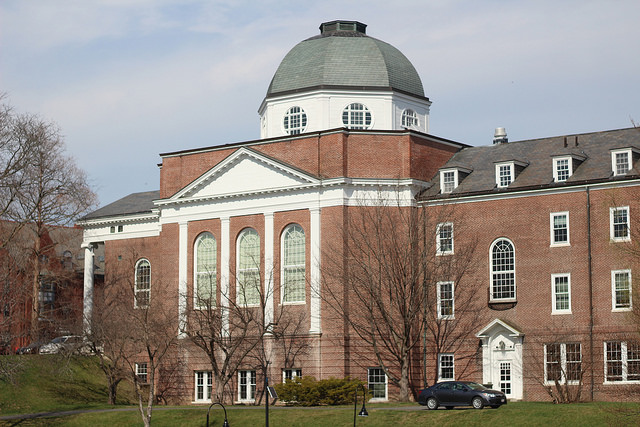Tradeswomen of Western Massachusetts held a panel titled “Only 3% are Women? A Forum on Diversifying the Construction Workforce” at Smith College on Thursday to inform and encourage women to decrease gender inequality in the construction industry.
All five of the panelists that spoke have multiple years of experience in the field and unanimously confirmed that, at the majority of their jobs, they are the only females working on-site.
“I remember walking through the Ted Williams tunnel before it was open, wearing my hard hat with pride, inspired to be part of such an immense undertaking,” said Susannah Howe, a senior lecturer in engineering and the design clinic director at Smith, “but I also remember nearly everyone around me, both in the office and in the field, were men.”
According to the panelists, the most predominant issue for women in the industry is not any of the tasks or challenges they face on the job, but simply gaining the confidence to enter such a stereotypically male-dominated profession.
“Women and girls are often not considered capable of doing this work…[or] aware of opportunities, or are discouraged from pursuing it,” Howe said.
Often, women stray away from the industry based upon common misconceptions rooted in biological gender stereotypes, Howe noted.
“I thought that people were going to be a lot meaner to me,” said Theresa Copeland, a University of Massachusetts graduate and third-year apprentice carpenter. “I was expecting the level of sexual harassment to be very high…but a lot of people are really nice. I was really scared, but I like it, and I’m good at it…It’s really been incredible to be a part of a union, something that’s bigger than me.”
While only three percent of the workers in the construction industry are women—a main point of discussion during the panel—recent developments over the past two decades in Massachusetts alone depict a rise in encouragement and action being taken by women to pursue careers in the field.
“About 80 percent of my workforce is female,” said Janet Butler, owner and president of Federal Concrete, “but I’m really pushing to drive up those numbers.”
Additionally, Butler noted an increase in the number of women engaging in these fields; this can be seen at Smith.
“In 1999, Smith expanded its support of math and science to include engineering. We graduated 19 students in our first class, and we’re graduating 48 this year,” Howe said.
“It’s really important for women to see that there is upward mobility in the trades and that this is a career, not just something that they can do for a few years,” Butler said. “[It’s necessary] to make sure that the union government represents women.”
Andrea Hanley can be reached at [email protected].



















